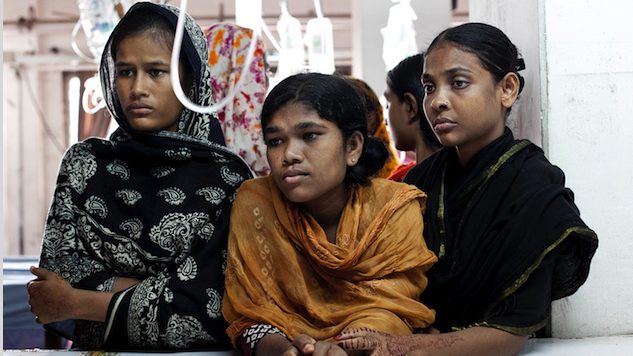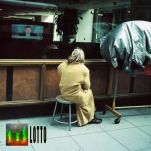Why You Should Care About the Bangladesh Garment Industry
Photo by Allison Joyce/Getty
The United States has been a bit preoccupied lately. Between our new administration’s extraordinarily rocky start and the nation’s general feelings of impending doom and uncertainty, it can be easy to forget that the rest of the world continues to spin. World news (unless it involves a wall or Russian hacking) has been largely put to the side as we continue to write stories about Trump’s Latest Twitter Tirade. It’s true that we have a lot of domestic problems—big ones. The refugee and Muslim ban has prompted protests nationwide, the EPA was put on radio silence and millions are in danger of losing their healthcare, to say nothing of Trump’s impending supreme court pick. It can be all too easy to overlook the wildfires raging through Chile, Gambia’s new president or the controversial West Bank construction. One international story that seems to have slipped through the Trump-spackled cracks involves the Bangladesh ready-made-garment industry.
You have more in common with the Bangladesh garment industry than you think. If you’ve bought clothes from H&M, Walmart or Gap in the past few years, chances are they were made in Bangladesh. Sharing a border with India and Myanmar, Bangladesh has a multi-billion dollar textile industry that produces ready-made garments at a pace second only to China. The reasons behind this lightning-fast efficiency, sometimes known as “fast fashion,” should be of no surprise: overcrowded buildings, a massive workforce and a government that at best suppresses workers’ rights and at worst imprisons labor activists indefinitely.
Recently, protests in Bangladesh have erupted over low wages in the face of inflation and the rising cost of living. Currently, the minimum wage in Bangladesh is 32 cents an hour, with a monthly minimum wages of about 68 dollars. In late Dec., an organized walkout led to the firing of almost 1500 workers and the indefinite detainment of at least 14 protest leaders and workers. Labor rights group say the mounting arrests and tensions are the worst setback for workers’ rights since the 2013 collapse of Rana Plaza.
If you don’t remember the Rana Plaza, then it’s definitely time for a recap. In the spring of 2013, the Rana Plaza, an eight-story building that housed several Western and European clothing factories, began to show signs of deterioration. Large cracks appeared on the sides of the building, and the shops on the lower levels were evacuated. The garment factories on the top floors remained opened, and insisted their employees return to work the following day. The building collapsed and more than 1100 people were killed. It is considered to be the largest garment-factory disaster in history, and it exposed the working conditions of the Bangladesh textile industry and the true cost of fast fashion. Following the tragedy, the executive director of the Worker Rights Consortium Scott Nova directly called out western manufacturers in The New York Times:
-

-

-

-

- Curated Home Page Articles By Test Admin October 21, 2025 | 3:10pm
-

- Curated Home Page Articles By Test Admin October 21, 2025 | 2:57pm
- Urls By Test Admin October 21, 2025 | 2:57pm
- Curated Home Page Articles By Test Admin October 21, 2025 | 2:55pm
-

-

-

-

-

-

-

-

-

-

-

-

-

-

-

-

-

-

-

-

-

-

-

-

-

-

-

-

-

-

-




































